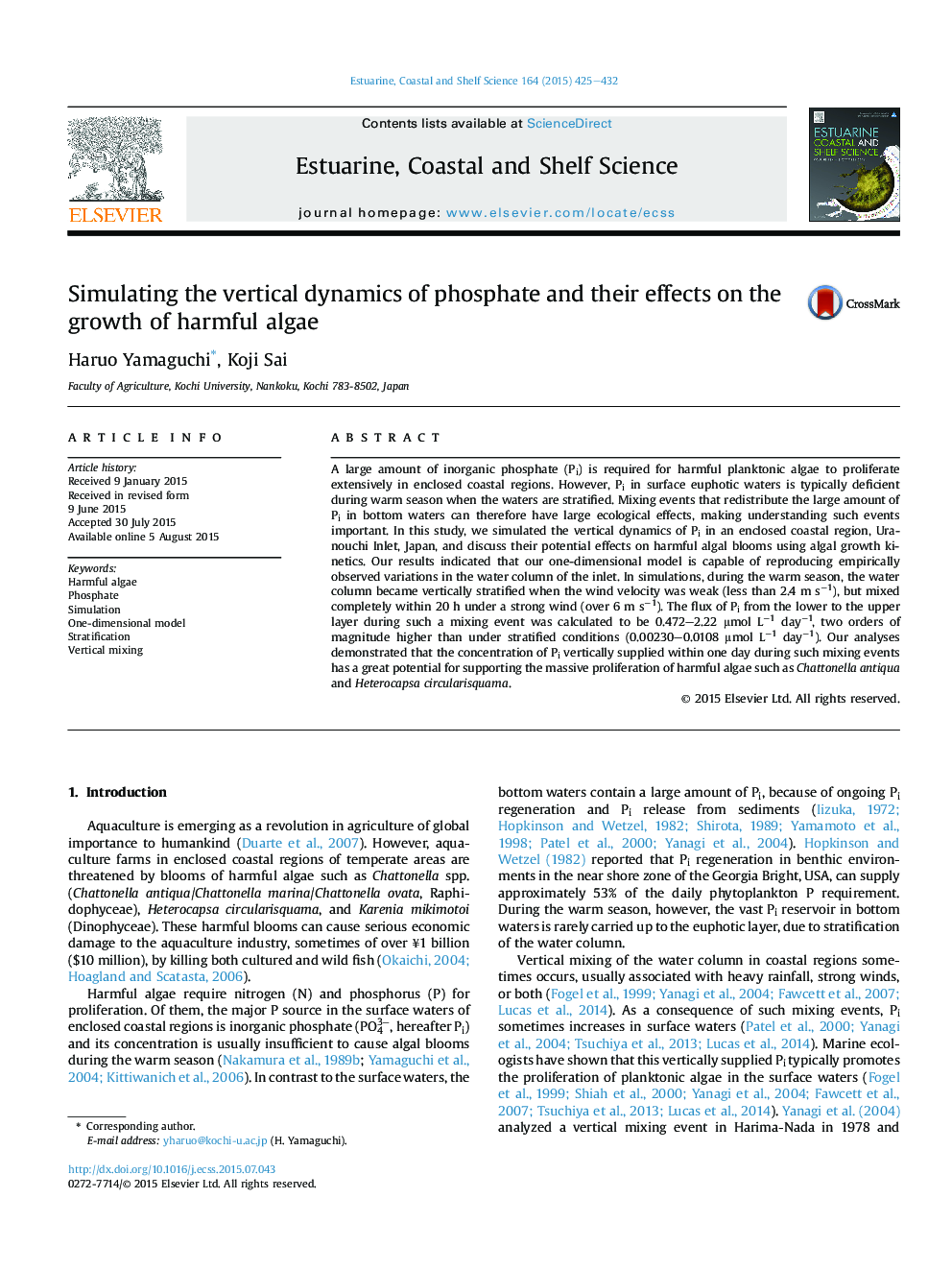| Article ID | Journal | Published Year | Pages | File Type |
|---|---|---|---|---|
| 6384731 | Estuarine, Coastal and Shelf Science | 2015 | 8 Pages |
â¢Our model reproduces empirically observed variations in the coastal water column.â¢The vertical fluxes of phosphate during a mixing event are 0.472-2.22 μmol Lâ1 dayâ1.â¢The concentration of phosphate can support the proliferation of harmful algae.
A large amount of inorganic phosphate (Pi) is required for harmful planktonic algae to proliferate extensively in enclosed coastal regions. However, Pi in surface euphotic waters is typically deficient during warm season when the waters are stratified. Mixing events that redistribute the large amount of Pi in bottom waters can therefore have large ecological effects, making understanding such events important. In this study, we simulated the vertical dynamics of Pi in an enclosed coastal region, Uranouchi Inlet, Japan, and discuss their potential effects on harmful algal blooms using algal growth kinetics. Our results indicated that our one-dimensional model is capable of reproducing empirically observed variations in the water column of the inlet. In simulations, during the warm season, the water column became vertically stratified when the wind velocity was weak (less than 2.4 m sâ1), but mixed completely within 20 h under a strong wind (over 6 m sâ1). The flux of Pi from the lower to the upper layer during such a mixing event was calculated to be 0.472-2.22 μmol Lâ1 dayâ1, two orders of magnitude higher than under stratified conditions (0.00230-0.0108 μmol Lâ1 dayâ1). Our analyses demonstrated that the concentration of Pi vertically supplied within one day during such mixing events has a great potential for supporting the massive proliferation of harmful algae such as Chattonella antiqua and Heterocapsa circularisquama.
Graphical abstractDownload high-res image (147KB)Download full-size image
